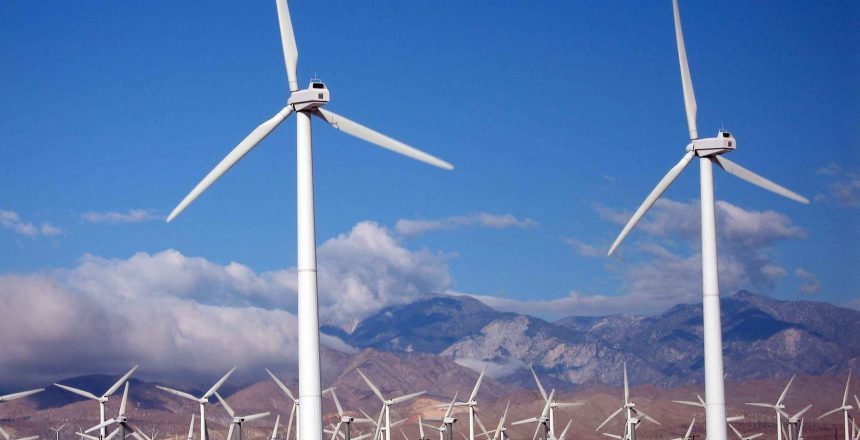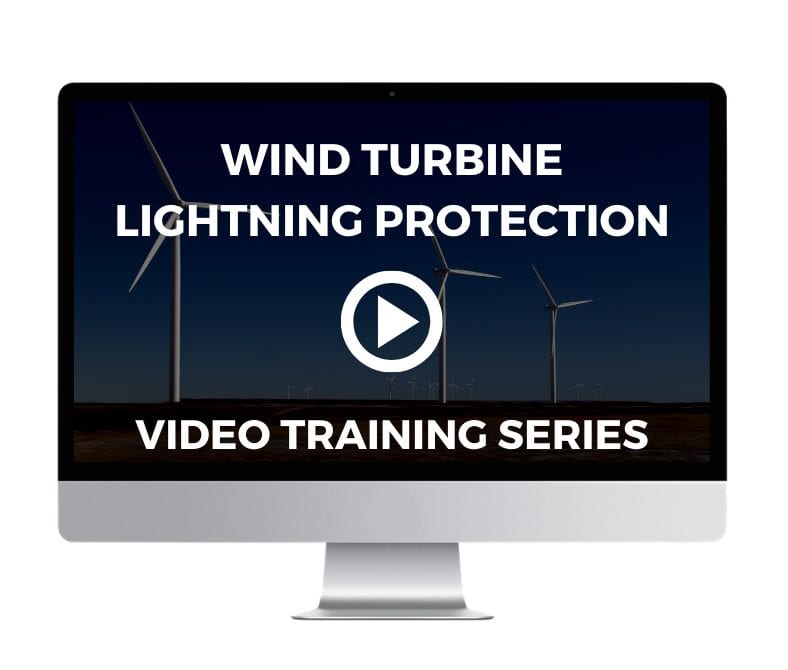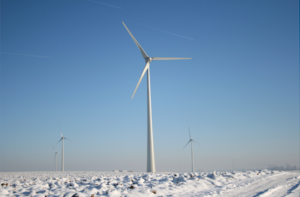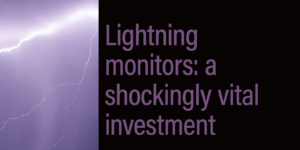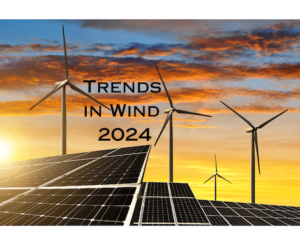As wind energy has moved into the mainstream worldwide, has the cost of a wind turbine gone down? And what factors contribute to wind turbine costs?
The answers are complicated, and not just because wind turbines are large and complex machines. To understand wind turbine costs, it’s necessary to consider the overall landscape of manufacturing (global manufacturing, at that) and the basics of energy economics. It’s only fair to answer the question, “what does a wind turbine cost and is it worth it?” by addressing some other questions, like:
- What kind of turbine, and to be installed where?
- How are you defining cost?
- And, compared to what?
Here we consider the costs of wind turbines – and of wind energy in general – in that larger context. Several helpful resources are linked at the end of the article.
TLDR: A commercial wind turbine costs several million dollars.
One reason it’s difficult to pin a price tag on a wind turbine is due to the variety of turbine sizes and specifications. The large metal components of a wind turbine – the tower, nacelle, and blades – account for nearly 80 percent of the cost of a typical turbine. While the primary construction material is typically steel and metal alloys, more composite materials and even wood are also used in wind turbine construction. All of those materials can vary significantly in price.
Another reason it’s difficult to define wind turbine cost is because there are many types of wind turbines with numerous system and component configurations.
Various systems and components, like anti-icing systems, vortex generators, and serrated trailing edges, are considered optional in some installations, but necessary in others based on weather conditions, soil type, and other site-dependent factors.
Manufacturer, Size, and Location Affect Wind Turbine Cost
While there’s no “standard” size for onshore commercial wind turbines, modern (onshore) wind turbines generally range from 80-150m tall, with blades that are 110-115m long, and rotor diameters of 110-150m. Offshore commercial wind turbines are necessarily larger, with larger capacities.
The current holder of the “world’s largest turbine” title is an offshore turbine by Ming Yang Energy Group. With 140m blades and a generating capacity of 18MW, it’s significantly larger than both the Vestas’ V236-15.0MW and GE Haliade-X (14.7MW)). Three years ago, they were the largest offshore turbines. Built for offshore installations, GE’s Haliade-X 14 MW turbine has a rotor diameter of 220 meters, a total height of 260 meters (853 feet), and blades that are 107 meters (351 feet) long. The GE Haliade-X 14 costs between $11-$13M.
Onshore wind turbines keep getting bigger
Wind Turbines: The bigger the better?
Wind Turbine Cost: Initial Purchase Considerations
Capacity specifications affect wind turbine pricing and also return on investment. At full wind speed, a turbine can produce at its full capacity. If a turbine is rated for 2.5 MW, then at peak wind speed it will crank out 2.5 MW of power. Megawatt hours explained
While most offshore wind farms today have focused on installing larger turbines to maximize production and minimize costs, several different wind turbine designs currently being tested may challenge the notion that fewer, larger turbines are best.
Look at some of newest turbine designs here.
Although it’s not part of the initial purchase price, site preparation is another factor that affects the total cost of installing a wind turbine.
And unlike some other capital investments, there are relatively fewer economies of scale for wind farm owners than for other developers. For example, volume discounts don’t affect cost as much as in some other industries. If you were to purchase 100 Escalades from Cadillac, you’d probably expect to get a quantity discount. But regardless of the size of the order, wind turbine cost is less likely to be discounted because wind turbine manufacturing – especially blade manufacturing – is still largely a hand-made process. Interested in wind turbine manufacturing? Get Uptime Tech News in your in-box every week
On the other hand, most original equipment manufacturers (OEMs) are willing to negotiate prices when customers sign long-term or comprehensive service agreements.
Wind Turbine Cost and Return on Investment
Depending on initial wind turbine costs, energy production, and maintenance costs, return on investment can vary widely, from 12-20 years. And like the initial cost of a wind turbine, the long payback period makes sense when you consider the many factors involved.
For example, wind turbine maintenance and repair costs affect a wind operation’s profitability and therefore, its ROI. All accounting methods are not the same, however, Operation & maintenance (O&M) expenses typically include:
- Insurance
- Land rent
- Service, repair and spare parts
- Administrative tasks
- Power (the electricity needed to run the wind farm)
Ongoing maintenance expenses have been estimated at 1-2 cents per kilowatt-hour produced; for a ‘typical’ onshore turbine that may amount to $40K-$50K per turbine. Adding to the complexity: O&M and repair costs increase significantly as turbines age.
Repairs can be a significant capacity reducer, extending the payback period.
O&M costs are significantly higher for offshore wind for obvious reasons – it’s more time consuming and expensive to reach offshore wind installations, so getting both equipment and workers to those farms is more costly. Additional training is required for many offshore installation, maintenance and repair workers, which is necessarily reflected in labor expenses.
Some other risks (and therefore costs) are higher in offshore wind farming. Lightning strikes on wind turbines is one example of a risk that can be a greater concern in offshore installations. In both on- and offshore installations, retrofit products like segmented lightning diverters can provide additional protection from lightning strike damage to wind turbines.
The US Department of Energy reviewed wind energy costs based on 2015 operations
What about the environmental payback of wind energy?
The environmental payback period as the amount of time it takes for wind turbines to generate the amount of energy that was used in their manufacturing process and installation. Estimates for the environmental payback period for a wind turbine to offset that energy use is between 6 months to a year.
Wind Turbine Costs and Wind Energy Profits
In 2021, some news outlets reported that Siemans Gamesa complained that the cost of wind energy was getting too cheap. But the situation is hardly that simple. The company actually addressed concerns that because of subsidies, tariffs and other (mostly governmental) financial programs, wind energy appeared to be the same cost or less expensive than other forms of energy – skewing the actual costs of development, ongoing manufacturing, and new innovations. The company raised an issue that continues to be address by governments and manufacturers today: how can subsidies and incentives (funded primarily by taxing consumers) maintain the development and growth of the market?
Because almost every country in the world subsidizes energy production costs in different ways – and the way those subsidies are calculated change frequently – it’s very difficult to establish hard numbers for energy costs.
Intelstor‘s Philip Totaro explains why Power Purchase Agreements (PPAs) are changing and how operators are adjusting to today’s market.
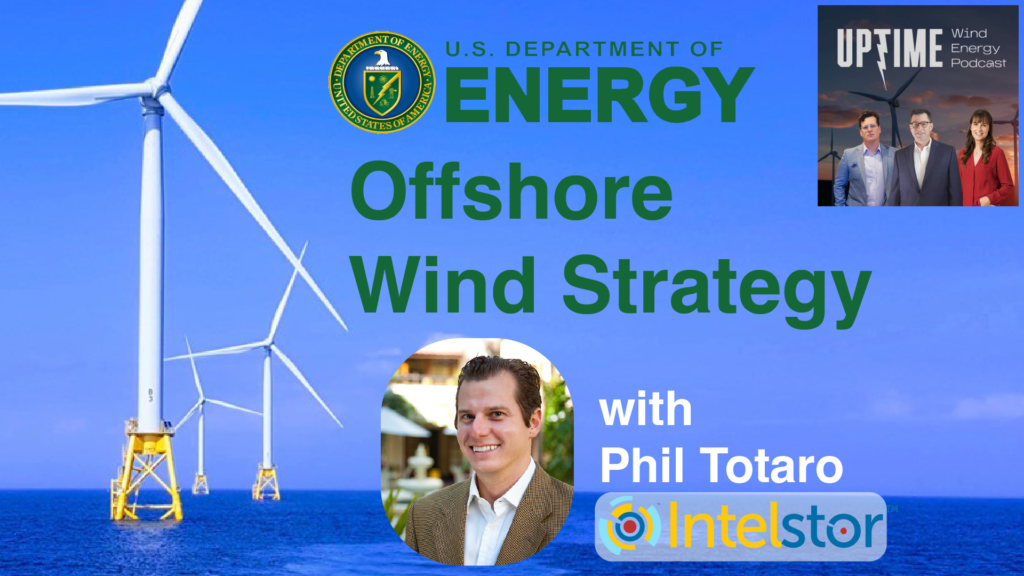
In 2017, the National Renewable Energy Laboratory published a report on how to cut the cost of wind energy in half. Read it here. In 2023, the US Department of Energy outlined a plan to reduce costs much further. Is it possible? The DoE’s goals seem pretty tough to reach, but new designs, manufacturing techniques, and technology innovations can help reduce costs.
Are Wind Turbine Costs Going Down?
In 2019, thanks in part to federal incentives, such as the Production Tax Credit or PTC, the national average price of wind power purchase agreements (PPAs) dropped to below 2 cents per kilowatt-hour in the US. That calculation made wind energy among the most affordable forms of new power generation.
Who Pays for Wind Energy Projects?
Wind and other renewable energy projects are being driven primarily by existing energy companies and cooperation among governmental agencies in the US. For example,Wheatridge Renewable Energy Facility in Oregon is a joint project between NextEra Energy Resources and Portland General Electric. Governments are the primary developers of energy production facilities in other countries.
While high-profile companies like Facebook and Anheuser-Busch have partnered with large power companies to build wind farms that will help them reach their sustainable energy goals, those projects account for a very small percentage of wind energy developments, in the US or worldwide.
So in effect, consumers finance the majority of wind and other energy projects, through taxes, subsidies, or via direct payments for electricity usage. For that reason, even though you’re unlike to build your own wind farm, it’s worth asking questions about wind turbine costs, efficiency, and return on investment.
More resources
2020 Cost of Wind Energy Review
Stehly, Tyler and Patrick Duffy. 2021. 2020 Cost of Wind Energy Review. Golden, CO: National Renewable Energy Laboratory. NREL/TP-5 https://www.nrel.gov/docs/fy22osti/81209.pdf
IRENA Power Generation Costs 2021
This 204-page report compares relative costs for solar, on- and offshore wind and other forms of renewable energy
Wind Turbine Cost: How Much? Are They Worth It In 2022?
Read the 2022 article to see how fast things change in the industry.
How green is wind energy?
Environmentalists and energy experts are very serious about that question. This article compares relative environmental advantages of wind, solar, and other forms renewable energy.

